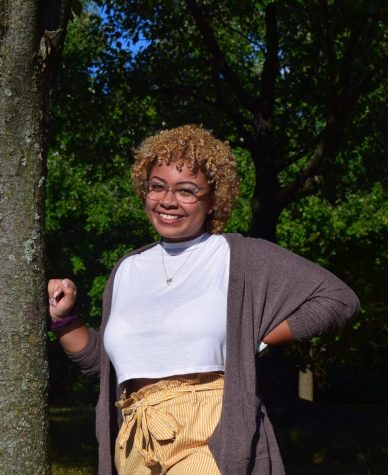Groundhog Day
The Science Behind Habits
Procrastinating, nail biting, skipping meals, stress eating, being late, and focusing on the negative. This is the reality that many face daily, all because of human habit. Bad habits are relatively simple to form–and unquestionably difficult to break.
Bill Murray asked in the movie Groundhog Day, “What would you do if you were stuck in one place and everything was exactly the same and nothing that you did mattered?”
For instance, Antwan Evans, a junior, said, “I have tried to stop biting my nails, and it is really hard because it seems I bite my nails for everything.”
Daily routines such as these can seem impossible to break, but students have attempted to improve their lives by breaking them. Sophomore Melanie Tong mentioned that it was hard for her to break her bad habits, but she knew it was necessary to grow into a successful young adult.
According to NPR, all habits are formed in three steps which they call the “habit loop.”
“First, there’s a cue, or trigger, that tells the brain to go into automatic mode and let a behavior unfold,” expert Charles Duhigg of the New York Times explains. Your brain triggers, as Duhigg says, and you act out in a certain behavior, good or bad.
While it seems habits are all formed in the same way, the origin of them can differ. These behaviors often transpire from role models such as parents, teachers, religious leaders, friends, and other people whom one aspires to be like.
Tong has a direct experience with this. Tong says, “I look up to people such as my instructors at my martial arts place who taught me to behave the way I do. They do this by building up discipline.”
Tong began to form the habits she has today by taking on the behavior of the people that she looks up to.
Step two is establishing a ritual–repeating the behavior over and over until it becomes second nature. This can result in either a great habit or a horrible habit.
“The best habit is saying please and thank you, and the worst habit is chewing with your mouth open,” Sophomore Kristine Deiss mentions.
Bad habits, such as chewing with an open mouth, are hard to break because of the fact that once a habit is made, the brain stores it away and forgets about it, at least consciously.
Without this characteristic of the brain, we would not be able to function throughout the day. Our brains would need to process and think about too many things, taking time away for our creativity.
At the same time, this makes it very difficult for humans to reverse that process.
“That’s why it’s easy – while driving or parallel parking, let’s say – to completely focus on something else: like the radio, or a conversation you’re having,” states an NPR article.
The last step of the habit loop is what Duhigg calls the reward, “…something that your brain likes that helps it remember the ‘habit loop’ in the future.” The loop, which consists of the cue, routine, and reward, starts over at this step.
This can be the environment you are in, or the people that you are around. Whichever it is, these situations can trigger the basal ganglia part of the brain, which is responsible for habits. The decision making part of the brain, the prefrontal cortex, is similar to this part of the brain, according to neuroscientists.
They say it is easiest to change habits while on vacation since a new environment is in effect.
Habits are so difficult to change because they are almost embedded into the brain, and we are around the same people with the same habits daily. On average, new habits take about a month to two months to form.
“When I realize I need to change…” Deiss said, “…I talk to my friends and see their input.”
While difficult to reverse, habits are still indeed possible to change with some time, dedication, and perhaps a little change of scenery.

